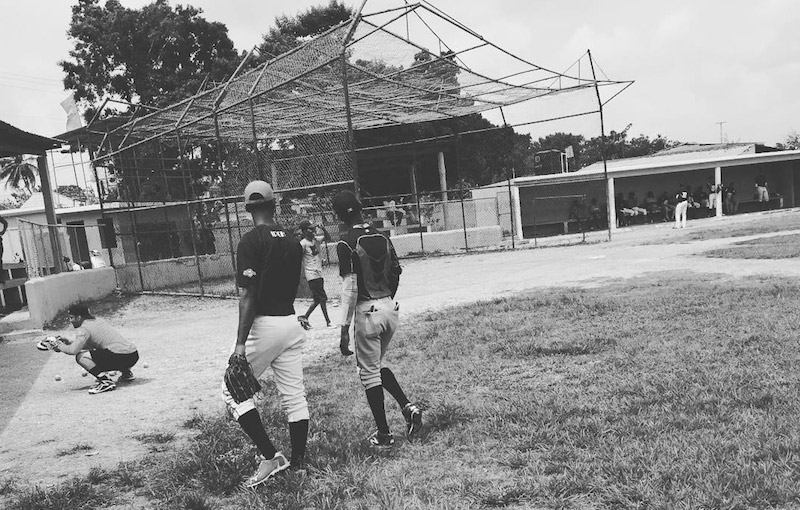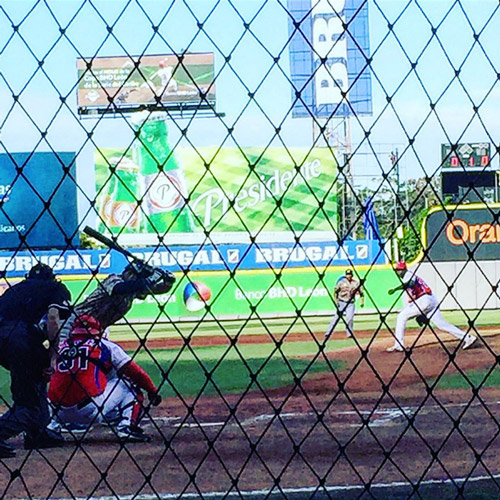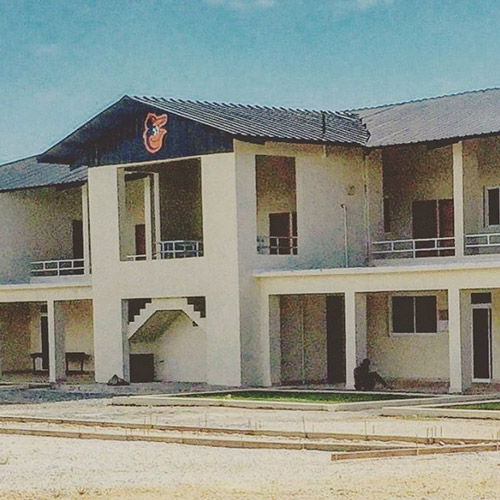Of the countries I most often visit, the Dominican Republic is a fascinating thermometer of the rising international temperature of baseball. Situated two and a half hours by flight from Miami in the Caribbean alley known as the Greater Antilles, the Dominican Republic shares the island of Hispaniola with its western neighbor, Haiti.

Its history is entwined with Spain’s colonial past when Columbus first sighted the island in 1492. The historical record of the Dominican Republic is penned with much of the same players and action associated with man’s quest for natural resources and the manipulation of labor in the region during the 15th to 19th Centuries. This European formula remained intact in the Caribbean until the late 17th Century when Spanish conquests over the Inca and Aztec Empires spread the empire thin and led to French control of the western territories of Hispaniola. By 1795, the French wrestled complete control of the island from Spain through the revolution strategies of Napoleon and eventually led to the consolidation flag of Haiti.
Eventually, the Dominican Republic gained independence from Haiti in 1844 and thus ushered in modern borders. But the baseball story for the Dominican Republic began in the 1870’s when Cubans migrated to its shores during the Ten Years’ War between Spain and Cuba (1868-1878) and brought with them a new game that had recently been introduced to Cuba in the mid 1860’s.
The passion for “beisbol” grew quickly around the island and eventually led to the founding of the first Dominican professional league by 1890, eleven years before the construction of Major League Baseball’s American League.
 When Dominican dictator, Rafael Leonidas Trujillo began his reign in 1930, the modernization of the island was birthed. Trujillo undertook public works projects building infrastructure that would increase commerce.
When Dominican dictator, Rafael Leonidas Trujillo began his reign in 1930, the modernization of the island was birthed. Trujillo undertook public works projects building infrastructure that would increase commerce.
He also included building baseball stadiums to give outlet to the increase demand of the game and to create natural rivalries between city and team loyalists.
He went as far as merging two popular rival teams (Licey and Escogido) from the Dominican capital of Santo Domingo (which had been renamed “Ciudad Trujillo”) into one team for the 1937 season. He even brought in Negro League legends, Satchel Page, Josh Gibson and Cool Papa Bell to play for the new “Dragones de Ciudad Trujillo” in order to boost his popularity by creating the greatest team he could. The Dragons won the championship but Trujillo’s strategy failed as he was ousted the following year and the Dominican league was disbanded due to financial woes.
By 1951, the Dominican League was revived as a summer league and by 1955 the current calendar as a viable winter league took root and has played a unique role in bringing the world to the Dominican stage. But perhaps the most important building block of the Dominican baseball infrastructure is Major League Baseball’s investment in developing young players through academies. Since the 1980’s, all 30 major league teams have constructed Dominican baseball academies at 19 different locations.
 The Orioles are a part of what’s known as “Baseball City” in Boca Chica, an area 40 minutes east of the capital. Along with the Chicago White Sox, Cincinnati Reds, Arizona Diamondbacks and the Toronto Blue Jays, Baseball City allows close proximity for inter-academy summer league play. And it’s the summer league play that launches the professional careers of these 16 to 20 year old MLB dreamers prior to them making it to rookie leagues in the United States.
The Orioles are a part of what’s known as “Baseball City” in Boca Chica, an area 40 minutes east of the capital. Along with the Chicago White Sox, Cincinnati Reds, Arizona Diamondbacks and the Toronto Blue Jays, Baseball City allows close proximity for inter-academy summer league play. And it’s the summer league play that launches the professional careers of these 16 to 20 year old MLB dreamers prior to them making it to rookie leagues in the United States.
And if you want to know some of the names of Dominican players that are native to the Dominican or have come up through the Dominican system, then look at the list of super stars from the past and present: Juan Marichal, Rico Carty, Manny Mota, Felipe Alou, George Bell, Pedro Martinez, Vladimir Guerrero, Manny Ramirez, Sammy Sosa, Robinson Cano, Adrian Beltre, and David “Big Papi” Ortiz just to name a few.
Thus, the investment of major league organizations into the baseball infrastructure of the island to the tune of over $30 billion in the past three decades continues unabated.
But, in order to paint a clear picture of the Dominican system, a few more details are needed.
While the population of the Dominican academy structure includes players from outside the Dominican Republic, the vast majority of the summer league rosters are Dominican dominant as are the coaches and leads to a process heavily influenced by Dominicans. It’s important to note that the process of identifying and signing players internationally is far different than the draft structure relegated to the United States, Canada and Puerto Rico.
Domestic scouts follow players as early as the beginning of their high school careers and keep extensive records of their development sometimes through college and culminating in the June draft of each year. International rules allow for clubs to sign players when they turn 16 years of age by July 2nd of each year, thus the term “July 2nd kids”.
But, the ability to follow and project players is far more difficult internationally because of the limited game experience of these youngsters and the incredible competition between organizations to discover them before anyone else.
The role “incubator” academies play in the Dominican process begins when a youngster turns 13 and the family agrees in terms with a “buscone” or “street agent”. The buscone facilitates the connection between prospects and major league organizations and often provides training, housing and agent services in exchange for 30% to 50% of the contract a player signs with the MLB team. This can be quite lucrative to a buscone considering some players like Washington Nationals shortstop, Yasel Antuna signed for $3.9 million just this past July. The lure of big money and the sins accompanied have been well chronicled on the island, but MLB has made inroads against unsavory practices of age doctoring and performance enhancing drugs in order to protect players and put on notice those who operate on the edges.
Currently, one of the main issues of the always contentious Collective Bargaining Agreement (CBA) between the players association and major league owners was creating an international draft and changing the age requirement from 16 to 18 years of age in order to slow down the growing dollar impact for MLB owners. The issue was an explosive one for the Dominican Republic and was viewed in an extremely negative light primarily because the economic impact it would have on the island and the incubator system.
Fortunately, both sides came to a last minute agreement and avoided a potential lock-out to begin the 2017 calendar season and thus squashed the drive for an international draft for at least the next five years. So, the 10 million Dominican citizenry can now dance a collective “Bachata” (the popular social dance exercised by the beautiful bachata music rhythms which is uniquely Dominican) and continue to draw scouts like me to its tropical location.
As for the long term direction of Dominican baseball is concerned, the future holds even more promise than ever before. My wish is that eventually, the educational cooperation between MLB and the island will grow to offer real opportunities to the youngsters who sacrifice so much to attain their goals.
But, that’s a blog for the future. In between that time, enjoy the popularity of baseball enriched by the flavor of the Dominican Republic.
Leave a Reply